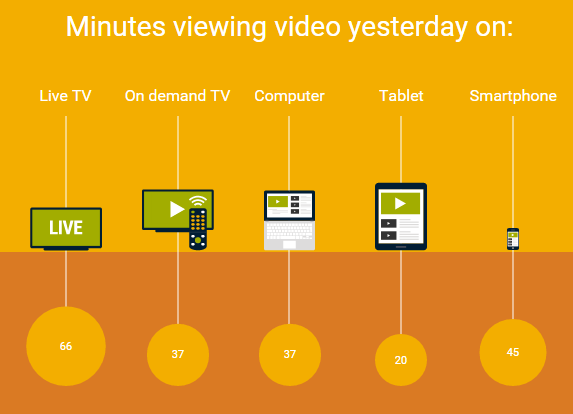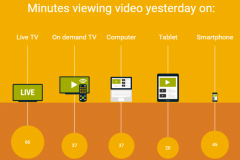Millward Brown part of the Kantar Group focuses on advertising effectiveness and brand development has published some results of their recent survey on TV versus digital viewing. This also covers the consumption and reception of advertising via both media.
The new report analyses multiscreen use and behavior among more than 13,500 consumers across 42 countries. The findings help marketers understand how, where and why people view video, when consumers are open to advertising and which creative approaches work best on each screen.
The results show that multiscreen users (using TV and other screen choices) between the ages of 16 to 45 spent a total of 204 minutes every day on average consuming videos. There is a spread between countries, with Nigeria having the highest average (4.5 hours) and Hungary the least amount (2.5 hours) of average TV viewing per day. Overall, this seems to be actually pretty high for an average daily video consumption. Between eating, sleeping, working and video watching there seems to be no time for any other activities left.
There is also a spread by age with the younger age group having a stronger affiliation with digital content including mobile devices. The group between the ages of 16 and 24 prefers the digital format with a 56% share versus the 35 to 43 year age group with 43%. Still, this is very high by any means already.
The firm also looked at how people react to ads in the digital versus TV space. They found that ads based on the viewer’s interests are finding the highest positive reception (41%) followed by preferred brands (40%). Ads based on web browsing history found the lowest positive reception with only 25% of viewers being receptive. It looks as though big data starts playing a larger role in the advertisements we will be receiving with our video consumption in the future. (NH)
The report can be downloaded from http://tinyurl.com/oddr5my


